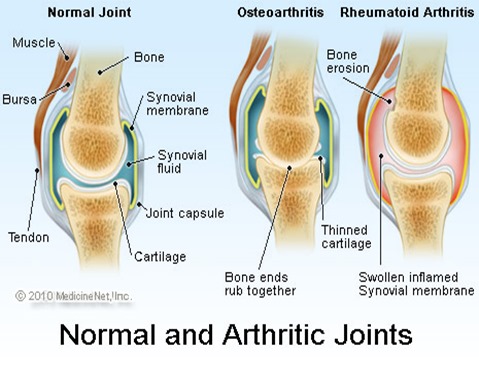गौटरिया ग्युमरी को हाइपरकोलेस्ट्रोलेमिया और कोलेलिथियसिस के उपचार के लिए परंपरागत मैक्सिकन चिकित्सा में छाल के रूप में इस्तेमाल जाता है। इसकी छाल और जड़ों के औषधीय गुणों की वजह से इसका इस्तेमाल गुर्दे की बीमारी, टाइप II मधुमेह मेलेटस के इलाज के लिए मेकिस्को में काफ़ी समय से किया जाता रहा है । इसका मुख्य घटक अल्फा-एसरोन है जिसे अलग-अलग निकासी प्रक्रियाओं से पृथक किया गया है जिनके मुख्य अवव्ययों में 16 एनालॉग, 4-प्रोपेनिल-1,2-डीमेथॉक्सीबेंजनों 5-प्रतिस्थापित किए गए । इन अववय्यो कॊ हाइपरकोलेस्ट्रोलेमेक नर चूहों पर सात दिन के लिए परीक्षण किया गया जहाँ कोलेस्ट्रॉल में क्रमशः 57.3, 37.5 और 46.9% और ट्राग्लिसराइड्स में क्रमशः 42.5, 67.6 और 17.2% की कमी देखी गई ।
गौटेरिया का कार्य क्षेत्र पित्ताशय पर भी देखा गया जहाँ अल्फा-एसरोन ने हमास्टर्स चूहों में पित्त के वजन को 80.6% कम किया है।
बीसवीं सदी के शुरुआती दिनों में मैक्सिकन होम्योपैथ डॉ. मैनुएल ए. लिजमा का ध्यान गौटेरिया की ओर आकर्षित हुआ , जिन्होंने 1913 में प्रकाशित मेडिकल विषय संकलन ( Medical Subject Compendium )में अपनी टिप्पणियां दर्ज कीं। तब से होम्योपैथिक छॆत्र में कई शोध कार्य के जरिये से गौटेरिया के अन्य घटकों जैसे अल्फा-एसेरोन के हाइपर्लिपीडिमिया पर औषधीय क्रिया को निर्दिष्ट किया है ।
लिन्क : https://biblat.unam.mx/en/buscar/guatteria-gaumeri
The elemuy, Guatteria gaumeri or Malmea depressa is a tree that lives in Mexico and Central America, and that due to the medicinal properties of its bark and its root has been used since pre-Hispanic times to treat renal affections, diabetes mellitus type II and hypercholesterolemia, among other diseases. At the beginning of the 20th century, it attracted the attention of the Mexican homeopathic physician Manuel A. Lizama, who proved its use for a decade and registered its observations in the Medical Subject Compendium, published in 1913. Since then, several investigations have been carried out inside and outside the country. homeopathic field that have confirmed and specified what is the medicinal action of alpha-asarone and other components of elemuy, but they have also suggested new attributes that it would be convenient to check or discard through scientific studies.
Hypercholesterolemia effectively managed with homeopathic medicine Gautteria gaumeri (Yumel): results from a clinical study in academic clinical set up in north India
Aejaz Husain, Ashish Indani, Poonam Bhutada
Abstract
Background: Hypercholesterolaemia increases the risk of atherosclerosis, subsequently IHD. Herbal-homeopathic medicines are unexplored as lipid-lowering agents. This study presents safety and efficacy outcomes of homeopathic Gautteria gaumeri Q, in treatment of hypercholesterolaemia.
Methods: This was a homoeopathic registry in real world population. A group of 29 subjects with mild to moderate hypercholesterolaemia with or without statin therapy were included in the study at a single centre in Udaipur, India. All subjects were given 10-15 drops of Gautteria gaumeri Q thrice in a day for 2 months and were followed fortnightly.
Results: The sample demographics were similar to typical Indian demographics (age 43±14 years, height 166.5cm, BMI 21kg/m2) having age 49±6 years, gender ratio 0.81 with 13 (45%) males and 16 (55%) females, height 157.07±26.18 cms and weight 71.5±11.78 Kg. The comorbidity included diabetes (44.83%), hypertension (68.97%), current smoking (44.83%) and CAD (31.03%). Thirteen (44.83%) subjects were taking statins for minimum 6 months. At baseline, mean TC, HDL, LDL, VLDL cholesterols and triglycerides were 223±25.8, 41.45±4.82, 150.9±25.97, 30.66±6.38 and 223±34.81 respectively. TC: HDL and LDL: HDL ratios were 5.44±0.82 and 3.69±0.77 respectively. At 2 months, TC reduced by 22.21 (9.96%), triglycerides, LDL and VLDL cholesterol demonstrated 39.55 (17.70%), 24.66 (16.34%) and 3.35 (10.91%) reduction respectively. HDL increased by 5.84 (14.09%). Proportion of population at risk defined as TC >200, LDL >120, VLDL >30, HDL <30 and triglycerides >200 was reduced by 17.24%, 31.04%, 13.79%, 100% and 31.03% respectively. (Baseline n=13). There were no ADRs in the study. Gauttaria gaumeri was proved to be efficacious in treatment of hypercholesterolaemia.
Conclusions: Guatteria gumeri was observed to be efficacious in controlling hypercholesterolaemia. There was no significant effect of statin therapy prior to starting Guatteria gaumeri Q. No safety issues were reported in the study.
Keywords
Cholesterol lowering, Dyslipidemia, Guatteria gaumeri, Hypercholesterolaemia, Hyperlipidemia, High cholesterol, Lipid profile, Lipid lowering, Statins, Yumel
Download Link : Link 1 pdf Hypercholesterolemia effectively managed with homeopathic medicine Gautteria gaumeri (Yumel): results from a clinical study in academic clinical set up in north India | Husain | International Journal of Advances in Medicine
Link 2 pdf
Referemces for Guatteria gaumeri
-
Cholesterol-lowering effect of Guatteria gaumeri(preliminary report) Josefina SanchezResendizAngel Lerdode Tejada
-
Hypercholesterolemia effectively managed with homeopathic medicine Gautteria gaumeri (Yumel): results from a clinical study in academic clinical set up in north India
-
Pharmacology and toxicology of Guatteria gaumeri and alpha-asarone
- Modifications of serum lipoprotein cholesterol with guatteriagaumeri
Sánchez Resendiz, J 1 ; Espinosa, M ; Delangel, H ; Gonzalez-vite, J ; Gutiérrez, L
1 National Polytechnic Institute , Interdisciplinary Center for Health Sciences, Mexico, Federal District. Mexico
[ Archives of medical research , Mexico, 1985 Vol. 16 Num. 4 Oct-Dec, Pag. 359-365] - Hypocholesterolemic action of Guatteriagaumeri
Sánchez Resendiz, J ; Lerdo de Tejada, A ; Gonzalez Vite, J ; Guzmán, R ; Tinoco, A
[ Traditional medicine , Mexico, 1980 Vol. 3 Num. 9, Pag. 20-22] - Lipid-lowering action of guatteriagaumeri in a patient with iib-type hyperlipidemia
Sánchez Resendiz, J ; Lerdo De Tejada, A
[ Traditional medicine , Mexico, 1980 Vol. 3 Num. 9, Pag. 22-24] - Effect of Guatteriagaumeri on seric triglycerides of the dog
Lerdo de Tejada, A ; Sánchez Resendiz, J ; Gonzalez Vite, J ; Tinoco, A ; Guzmán, R
[ Traditional medicine , Mexico, 1980 Vol. 3 Num. 9, Pag. 24-25] - Guatteriagaumeri, Malmea depressa or Yumel, a Review of its History, its Properties and its Use in Homeopathy
Mejía, Rafael 1
1 National Autonomous University of Mexico , Faculty of Political and Social Sciences, Mexico City. Mexico
[ Homeopathy of Mexico , Mexico, 2016 Vol. 85 Num. 700 Jan-Feb, Pag. 28-38]
















You must be logged in to post a comment.